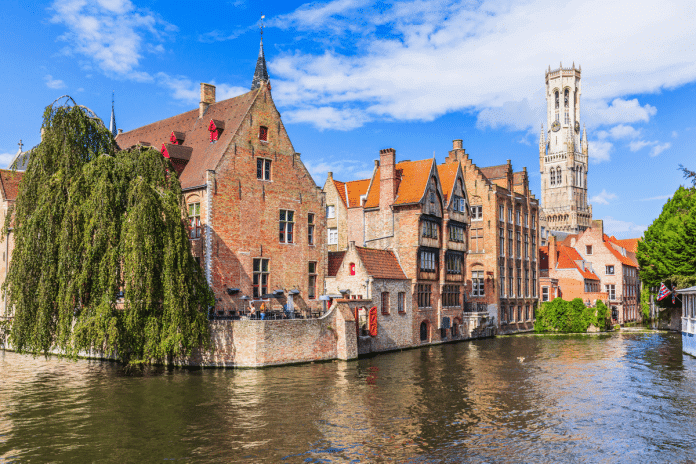Sometimes we end up discovering the best places when we do not have a plan in place. On my way to Warsaw recently, I had a 14-hour layover waiting for me in Brussels, the capital of the European Union. On a whim, I took a random train from the Brussels Central Station to the quaintly beautiful Belgian city of Bruges – the Venice of the North.
The cobbled streets, colourful doors, and pretty flower pots adorning the windows made me feel I was in a fairytale. Almost every window featured intricate lace detailing or lace curtains, giving them a quaint, storybook-like appearance. It was only when we took a boat ride through the canal, crossing various bridges in the city, that the guide informed us that lacemaking originated in Bruges.
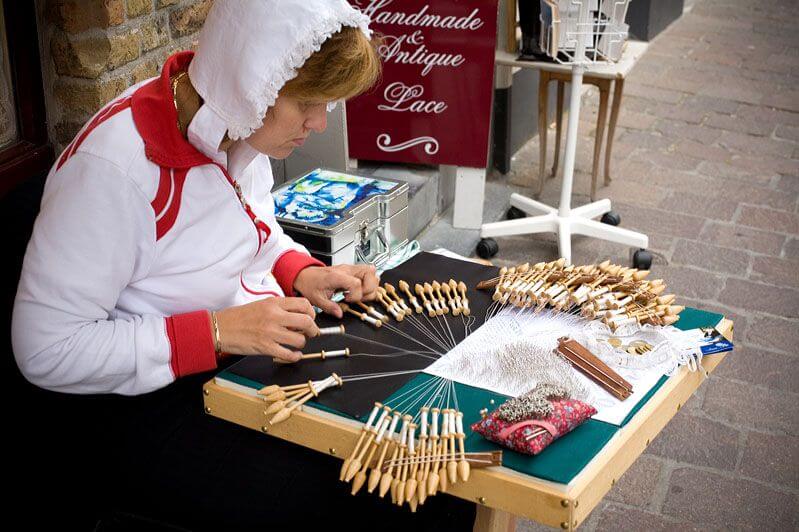
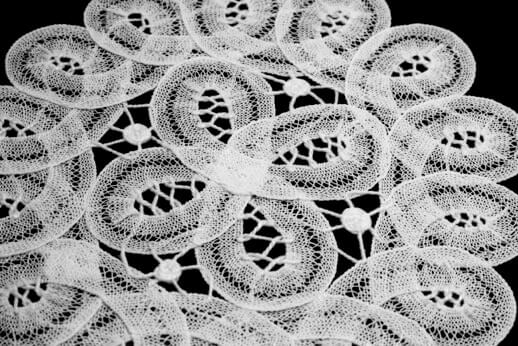
In the 16th century, the city of Bruges adopted a tradition of weaving lace into thousands of shapes and patterns, contributing to Belgium’s textile industry success. The great fondness of the Flemish residents of Bruges for impressive, quality clothing led to the development of over 1,500 kinds of lace woven from silver, gold, and silk.
Due to the long and arduous weaving process, the people of Bruges are experts in producing lace so delicate that it is not suitable for mass production.
Originated on the banks of the River Reie, the city is rich in history. Interestingly, Julius Caesar’s conquest of the Menapii in the first century BC led to the construction of the first fortifications here to protect the coastal area against pirates. Over time, the tidal inlet, known as the “Golden Inlet,” played a significant role in the city’s development as a hub for local commerce. In the year 1128, the place got its city charter. The construction of new walls and canals eventually gave the city of Bruges its current shape.
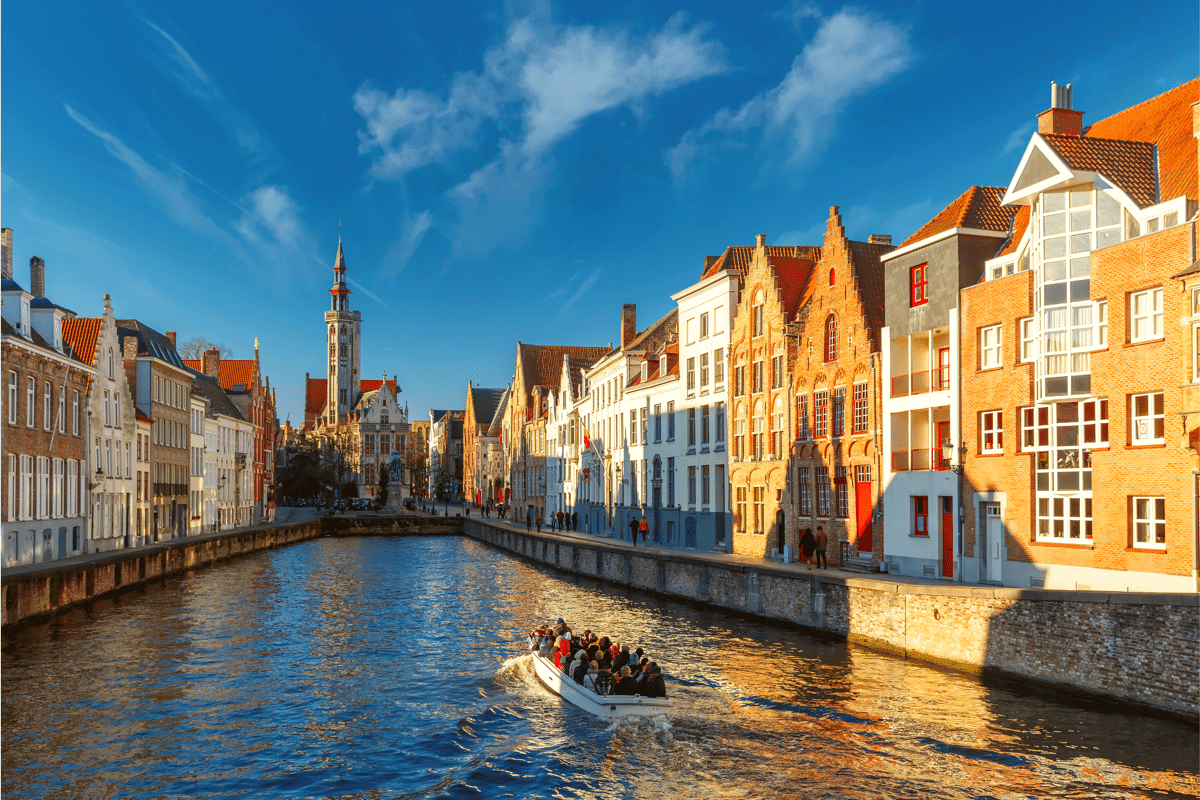
Buildings have an interesting role to play in the character of a city, and in Bruges, they are not only pretty but scream history.
From almost any corner of the city, you’re able to see the Church of Our Lady. Built in the 13th century, its tower, at 379 feet in height, remains the tallest structure in the city and the second tallest brickwork tower in the world.
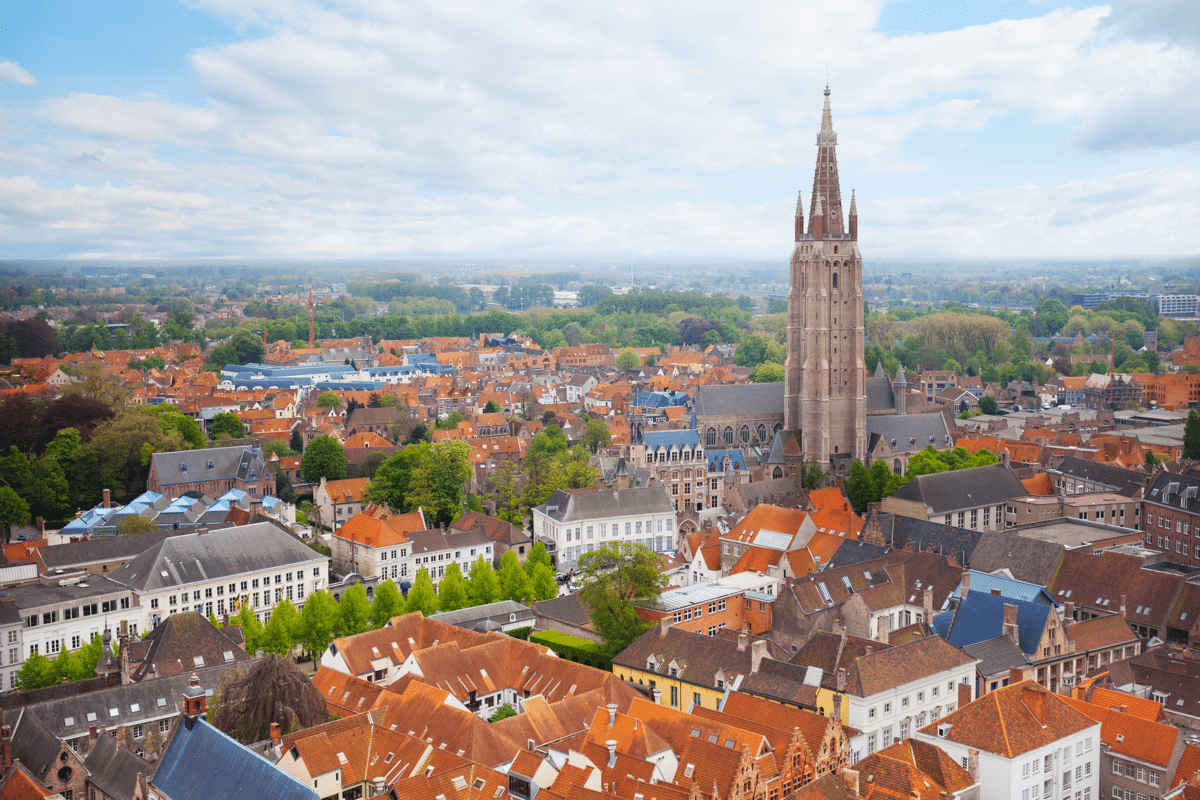
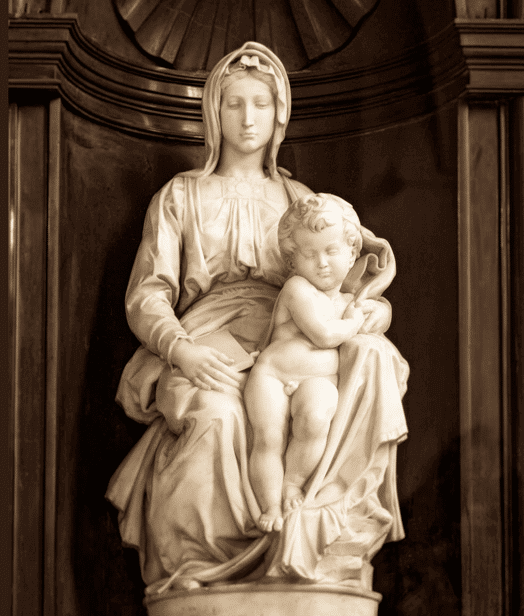
Art lovers, you will find something fascinating on the church premises. The altarpiece of the large chapel in the southern aisle enshrines the most celebrated art treasure of the church—a white marble sculpture of the Madonna and Child created by Michelangelo, circa 1504.
The Hospital of St. John (Oud Sint-Janshospitaal) is another mediaeval marvel in this old town. Founded in the mid-12th century, the hospital stands adjacent to the Church of Our Lady. FYI, the premises contain some of Europe’s oldest surviving hospital buildings. During the Middle Ages, the hospital flourished, providing care for sick pilgrims and travellers. The building continued to serve as a hospital until 1977, when it relocated to a newer, modern facility.
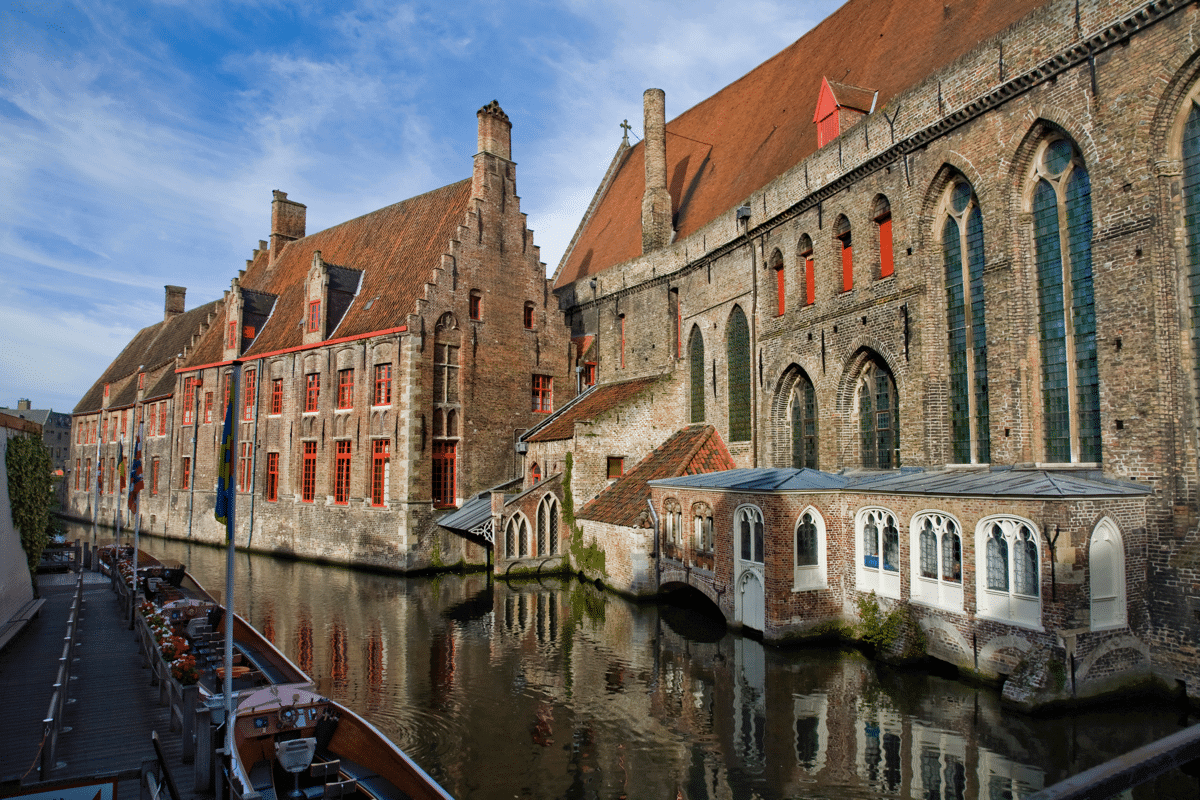
The city of Bruges then took over the buildings. The popular Hans Memling Museum, named for the German-born early Dutch painter, now occupies part of the hospital complex and displays several works, along with hospital records, medical instruments, and other works of art.
The Markt, or the Market Square of Bruges, is located in the heart of the city and covers an area of about one hectare. Avoid confusing the Markt with the Centre of Bruges. Despite their close proximity, the Centre of Bruges and the Markt are distinct entities. Some historical highlights around the square include the 12th-century belfry and the West Flanders Provincial Court. The statues of Jan Breydel and Pieter de Coninck stand in the centre of the market.
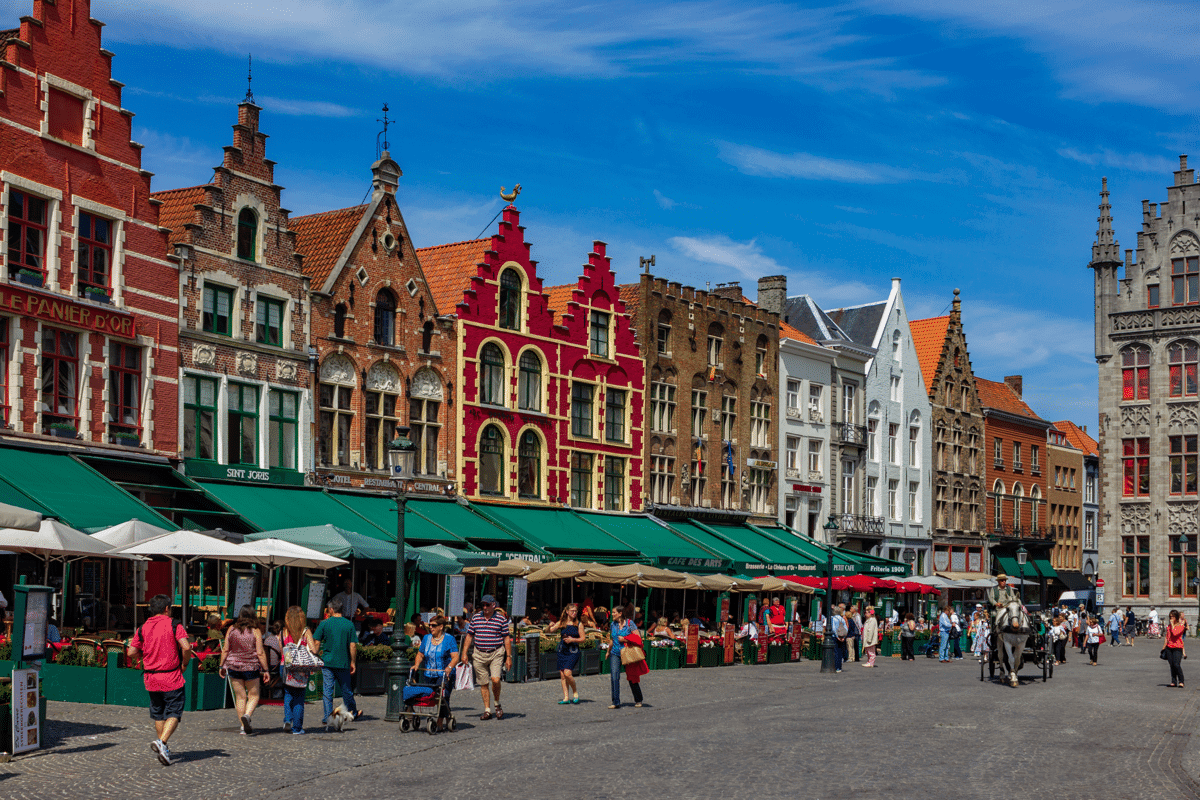
The Historic Centre of Bruges is an outstanding example of an architectural ensemble. The city’s public, social, and religious institutions illustrate significant stages in the history of commerce and culture in mediaeval Europe. In the year 2000, UNESCO granted World Heritage Site status to the Centre of Bruges.
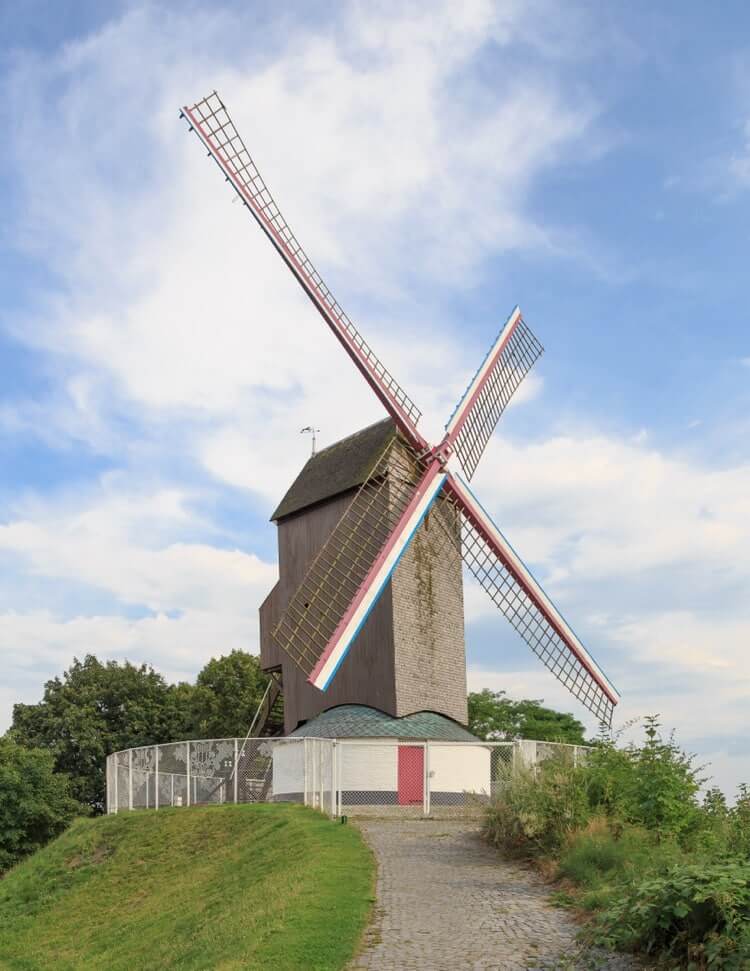
We were pressed for time, as we needed to board a train back to Brussels. But a little adventure is not bad for health, eh?
We decided to catch a glimpse of the famous Belgian windmills on the outskirts of the town.
Belgium has a rich mill history. If you check a map of Bruges from the 16th century, you’ll count about 23 windmills. They were part of the town walls since the end of the 13th century. Today, there are four remaining mills between the Dampoort and the Kruispoort. We visited the Koeleweimill (Coelewey Mill), which was used for corn and was always known as Bosterhoutmolen. It began as a wooden mill on a closed brick base in 1765.
One great suggestion we received from a local when he saw us struggling to get back to the station on time was to rent a bicycle to cover all four windmills.
Words will never be enough for me to describe how beautiful and rich in history and culture the city of Bruges is. I go by the adage “seeing is believing” and advise you the same. Moreover, if you are confident that you have seen it entirely in the Anushka Sharma and Sushant Singh Rajput starrer PK (2014) or in Colin Farrell comedy In Bruges (2008), well, it’s best to see for yourself.
Read more: Where green meets blue



